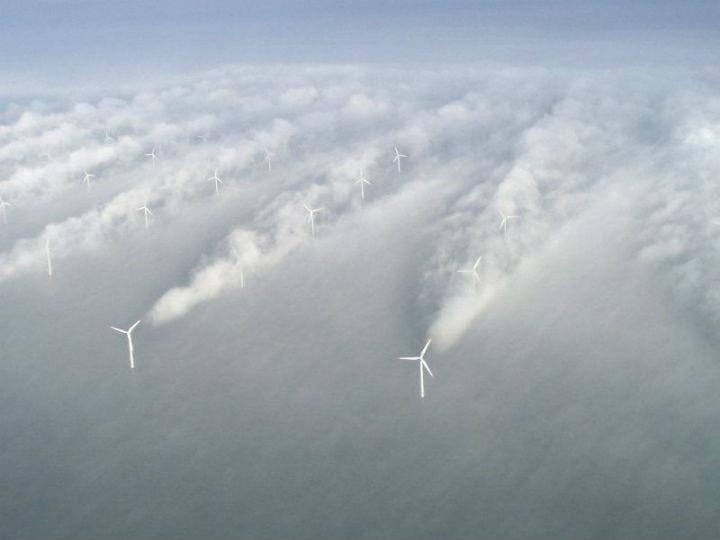by Kira Taylor
EU member states must introduce policies to support their wind power ambitions, according to industry lobby group WindEurope.
WindEurope’s annual report, published on Friday (16 October), shows that 15% of the EU’s energy consumption was provided by wind power in 2019, but this will need to substantially increase to meet climate targets.
By 2050, the European Commission wants wind power to provide 50% of the EU’s electricity.
“This is a big challenge that the EU has set us. Can we deliver? Yes we can, we have the technology,” said Giles Dickson, CEO of WindEurope, adding that new wind farms would bring economic and social benefits and contribute towards economic recovery.
To achieve this, countries need to introduce policy to reach the ambitions in their national energy and climate plans.
“The problem is that the national energy and climate plans are, in many cases, missing the detailed policies, measures and instruments that are needed to deliver this major expansion in wind energy,” said Dickson.
All 27 member states have commitments for expanding wind energy in their plans, but a lack of detailed policy leaves “a big question mark over them”, according to Dickson.
WindEurope has previously pointed out these issues, highlighting three steps needed to improve wind power in the EU: bringing in better planned auctions, improving electrification and simplifying permits and planning.
While Europe as a whole is on track with electrification, WindEurope points to varying effectiveness of auctions across member states whilst permitting is generally considered bad.
Permits are too slow
Permit issues remain a thorn in the side of the wind industry with complicated authorisation procedures and a lack of qualified civil servants to oversee them. The COVID-19 crisis has worsened this, syphoning civil servants to deal with the pandemic.
Under the new renewable energy directive, member states should only take a maximum of two years to permit or deny new turbines and a year for repowering projects, where turbines are replaced by newer, more efficient models.
Many member states are improving, with France and Germany working on new plans to speed permits. Germany has already improved applications with the government putting more resources into reviewing applications.
Public opinion has also been a stumbling block for the industry with groups like Cereme in France taking adverts out in national newspapers, and saying wind energy is not renewable.
“Maybe they have a different approach to definitions and language to the rest of us, but the facts do not support their assertions,” said Dickson, when asked for his response to this claim.
In some countries, the opposition to wind farms has become better organised and funded with groups paying lawyers to tackle applications.
“Here the complexity of the permitting rules comes into play because when you’re paying for the very best lawyers, it’s not too difficult for them to find, let’s say, one of a hundred boxes you had to tick in your permit application, which you didn’t tick properly,” Dickson said.
In general, though, he thinks public opinion is behind wind farms, citing opinion polls showing over “70% of people in Europe support the further expansion of onshore wind”.
Community engagement is key
By the end of the year, WindEurope plans to introduce an industry standard for dealing with communities, who Dickson says benefit from local taxes and initiatives funded by wind farms.
“That is bringing jobs and investment to rural communities, that might be missing out on the investments that are happening in the larger metropolitan areas,” said Dickson, pointing to old ship building centres in Northern Poland, like Gdansk and Gdynia, where 10,000 jobs have been created producing equipment for wind turbines.
He pointed to the revenue wind farms bring, saying: “There are many local governments that get 10% of their revenue, so 10% of their total budget. Annual expenditure is covered by what they receive from the local wind farm.”
The report says the contribution of wind power to the EU’s GDP is €37 billion per annum, matching countries like Croatia and Slovenia.
Other issues include EU curbs on supplies from China, which “undermines” the wind industry, and the COVID-19 crisis delaying some installation as building wind farms is not yet considered an essential service.
Despite this, the wind industry has been fairly “resilient” to COVID, according to the report. Wind farms continued to operate through the pandemic, providing 17% of Europe’s electricity consumption in the first six months of 2020.
The 248 factories across Europe which make the components and assemble wind turbines are now operating again and new investments, totalling €40 billion this year, have been announced.
*first published in: www.euractiv.com




 By: N. Peter Kramer
By: N. Peter Kramer
